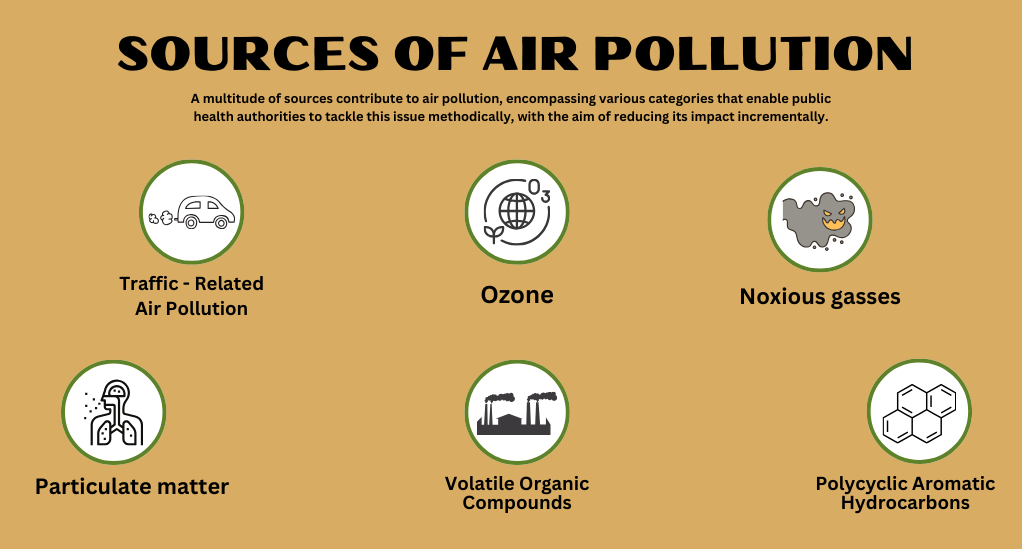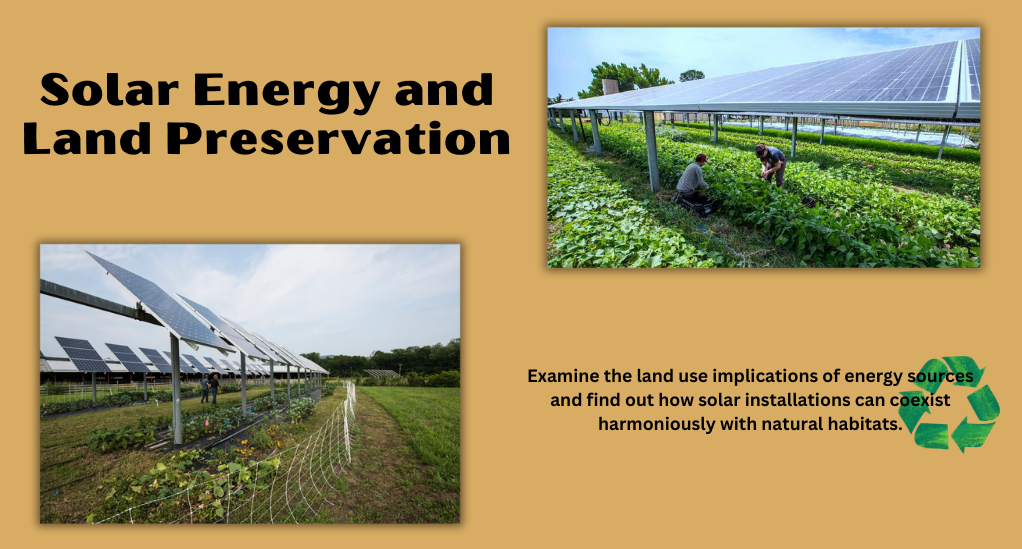In the ever-evolving landscape of global energy, the quest for sustainable and environmentally friendly sources has never been more pressing. As the world grapples with the consequences of climate change, dwindling natural resources, and increasing pollution, the spotlight has firmly settled on renewable energy sources. Among these, solar energy stands out as a beacon of hope, promising a future where power generation aligns harmoniously with environmental preservation.
The Global Energy Landscape: A Snapshot
Historically, the world has been heavily reliant on fossil fuels, such as coal, oil, and natural gas, to meet its energy demands. According to the International Energy Agency (IEA), as of 2020, fossil fuels accounted for nearly 80% of the world’s total energy consumption. This heavy dependence has come at a significant environmental cost, from air and water pollution to habitat destruction and, most notably, the emission of greenhouse gases.
| Energy Source | Percentage of Global Energy Consumption (2020) |
|---|---|
| Fossil Fuels | 80% |
| Renewables | 20% |
| – Solar | 3% |
| – Wind | 4% |
| – Hydro | 7% |
| – Others | 6% |
While the percentage of solar energy might seem small in comparison, its growth rate is nothing short of remarkable. Over the past decade, solar energy’s contribution to the global energy mix has seen an exponential rise, thanks to technological advancements, cost reductions, and increased awareness about its environmental benefits.
The Rising Importance of Renewable Energy Sources
The shift towards renewable energy is not just a trend but a necessity. The Paris Agreement, signed in 2015, set an ambitious goal to limit global warming to well below 2°C above pre-industrial levels. Achieving this target requires a significant reduction in greenhouse gas emissions, a feat impossible without transitioning away from fossil fuels.
Solar energy, with its abundant availability and decreasing costs, offers a viable solution. Unlike fossil fuels, which are finite and subject to geopolitical tensions, the sun provides a limitless, decentralized, and universally accessible source of power. Moreover, the environmental benefits of solar energy extend beyond just reducing carbon emissions. As we’ll explore in this article, solar energy plays a pivotal role in water conservation, air quality improvement, and land preservation.
The Carbon Footprint Conundrum
Explore the environmental implications of traditional energy sources and discover how solar energy offers a path to a significantly reduced carbon footprint.
Traditional Energy Sources and Their Carbon Emissions
The term “carbon footprint” refers to the total amount of greenhouse gases, primarily carbon dioxide, that are emitted directly or indirectly by human activities. Fossil fuels, being carbon-rich, release significant amounts of CO2 when burned. This has been the primary driver of the increase in atmospheric CO2 levels, which have surged from pre-industrial levels of about 280 parts per million (ppm) to over 410 ppm in recent years.

Coal, for instance, has been a major culprit. Despite providing a significant chunk of global energy, its combustion releases a higher amount of CO2 compared to other fossil fuels. Natural gas, while cleaner than coal, still contributes to greenhouse gas emissions. Oil, used predominantly in transportation, also adds to the carbon conundrum.
How Solar Energy Significantly Reduces Carbon Footprints
Solar panels, once manufactured and installed, produce electricity without emitting greenhouse gases. The sun, as a source of energy, is clean and inexhaustible. While there are emissions associated with the production, transportation, and installation of solar panels, the overall carbon footprint of solar energy is a fraction of that of fossil fuels.
A study by the National Renewable Energy Laboratory (NREL) found that the median value of CO2 emissions from solar PV is about 40 grams per kWh, which is significantly lower than any fossil fuel source. Over its lifetime, a solar panel system can offset tons of CO2 emissions, equivalent to planting thousands of trees.
Moreover, as technology advances and the efficiency of solar panels improves, the energy payback time (the time it takes for a solar panel to produce the energy it took to manufacture) has been decreasing. Current estimates suggest that solar panels can “pay back” their energy in as little as 1-2 years, while their lifespan is typically 25-30 years. This means that for the vast majority of their operational life, solar panels are net-positive in terms of energy production and carbon offset.
Water Conservation and Solar Energy
Uncover the often-overlooked connection between energy production and water consumption, and see how solar energy stands out as a water-conserving solution.
The Water-Intensive Nature of Conventional Power Generation
Water is a vital resource, essential for life and integral to almost every industrial process, including energy production. Traditional power generation methods, especially those reliant on fossil fuels and nuclear energy, consume vast amounts of water. This consumption occurs in various stages, from extracting and processing raw materials to cooling power plants.
For instance, coal-fired power plants require water for mining, cleaning the coal, and cooling the steam that drives the turbines. Similarly, nuclear power plants, while not emitting greenhouse gases, are among the most water-intensive forms of energy production. They rely heavily on water for cooling, and any disruption in water supply can hamper their operations.
| Energy Source | Water Consumption (gallons per MWh) |
|---|---|
| Coal | 500 – 600 |
| Natural Gas | 100 – 300 |
| Nuclear | 600 – 800 |
| Solar PV | 20 |
Solar Panels and Their Minimal Water Requirements
In stark contrast to conventional power generation methods, solar photovoltaic (PV) systems require minimal water. The primary water usage in the solar industry is for cleaning the panels to maintain their efficiency, which is a relatively infrequent process. Even when accounting for water used in the manufacturing process, solar PV’s water footprint is significantly lower than that of fossil fuels or nuclear energy.
The reduced water consumption of solar energy has profound implications, especially in water-scarce regions. By transitioning to solar, regions facing water shortages can alleviate some of the pressures on their water resources. This is particularly crucial as climate change exacerbates drought conditions in many parts of the world.
The Broader Implications of Water Conservation
Beyond the immediate benefits of reduced water consumption, there are broader environmental implications. Water used in power plants, especially for cooling, often returns to natural sources at higher temperatures, a phenomenon known as thermal pollution. This can harm aquatic life and disrupt local ecosystems. Solar energy, with its minimal water requirements, mitigates this risk.
Furthermore, by conserving water, we reduce the energy required for water treatment and transportation, creating a positive feedback loop of energy and water savings.
Reduction in Air Pollutants

Harmful Pollutants from Fossil Fuel Combustion
While carbon dioxide often takes center stage in discussions about the environmental impact of energy sources, it’s not the only concern. Fossil fuel combustion releases a cocktail of harmful pollutants into the atmosphere, many of which have direct health implications for humans and detrimental effects on the environment.
Some of the most concerning pollutants include:
- Sulfur Dioxide (SO2): Primarily produced from coal combustion, SO2 can lead to the formation of acid rain, which harms aquatic life, forests, and even buildings. In humans, it can cause respiratory problems and aggravate existing heart conditions.
- Nitrogen Oxides (NOx): Emitted from most fossil fuel combustion processes, NOx pollutants contribute to smog formation, acid rain, and ground-level ozone. They can irritate the lungs and lower resistance to respiratory infections.
- Particulate Matter: These tiny particles can penetrate deep into the lungs and even enter the bloodstream. They’re linked to a range of health issues, from minor irritations to more severe conditions like heart attacks and decreased lung function.
- Mercury: Coal plants are a significant source of mercury emissions, a potent neurotoxin that can damage the brain, heart, kidneys, lungs, and immune system.
How Solar Energy Leads to Cleaner Air and Healthier Communities
Solar panels produce electricity without burning fuels, which means they emit no air pollutants during operation. By replacing or reducing the need for fossil fuel-based power generation, solar energy directly reduces the amount of harmful pollutants released into the atmosphere.
The health benefits of this reduction are substantial:
- Fewer Respiratory and Cardiovascular Problems: By reducing pollutants that irritate the respiratory system or harm the heart, solar energy can lead to fewer hospital admissions and a decrease in related health issues.
- Decreased Mortality Rates: Studies have shown that air pollution contributes to premature deaths. Cleaner air, facilitated by solar energy, can help reduce these numbers.
- Economic Savings: Health issues related to air pollution place a significant financial burden on healthcare systems and result in lost labor productivity. By improving air quality, solar energy can lead to economic savings in healthcare and increased productivity.
Mitigating Climate Change
Understand the pivotal role of greenhouse gases in global warming and how solar energy is a key player in the fight against climate change.
The Role of Greenhouse Gases in Global Warming
At the heart of the global climate crisis is the phenomenon of the greenhouse effect. While naturally occurring greenhouse gases (GHGs) like carbon dioxide, methane, and water vapor are essential for maintaining Earth’s habitable temperature, human activities have significantly increased their concentrations in the atmosphere. This enhanced greenhouse effect results in global warming, leading to a cascade of environmental challenges, from rising sea levels to more frequent and severe extreme weather events.
Fossil fuel combustion is the primary contributor to this surge in GHGs. As of 2022, the concentration of atmospheric carbon dioxide had surpassed 410 parts per million (ppm), a level not seen for millions of years.
Solar Energy’s Contribution to Slowing Climate Change
Solar energy’s role in mitigating climate change is twofold:
- Direct Reduction of GHG Emissions: Solar panels produce electricity without emitting GHGs. Every kilowatt-hour (kWh) of solar-generated electricity reduces the need for electricity produced from fossil fuels, thereby preventing the associated emissions.
- Indirect Reduction through Technological Advancements: The growth of the solar industry drives technological innovations. Advancements in energy storage, grid infrastructure, and energy efficiency often accompany the rise of solar energy. These innovations further reduce our carbon footprint by making the entire energy system more efficient and sustainable.
To put things in perspective, the Solar Energy Industries Association (SEIA) estimated that solar installations in the U.S. alone offset more than 100 million metric tons of carbon dioxide in 2021. This is equivalent to removing 22 million cars from the road or planting 1.6 billion trees.
The Broader Impacts of a Solar-Powered World
A transition to solar energy doesn’t just reduce GHG emissions; it also helps in:
- Stabilizing Global Temperatures: By reducing the primary driver of global warming, we can work towards stabilizing global temperatures, a crucial goal of international climate agreements like the Paris Agreement.
- Protecting Biodiversity: Climate change poses a significant threat to various species, leading to habitat loss and changing ecological dynamics. By mitigating climate change, solar energy indirectly contributes to the preservation of global biodiversity.
- Safeguarding Communities: Rising sea levels, extreme weather events, and changing precipitation patterns threaten communities worldwide. Transitioning to solar energy can help reduce the severity of these impacts, protecting people and their livelihoods.
Economic Benefits Tied to Environmental Conservation
Beyond its environmental merits, discover how solar energy drives economic growth, job creation, and savings in healthcare.
Job Creation in the Solar Industry
The rise of solar energy isn’t just an environmental success story; it’s also an economic one. As countries around the world ramp up their solar installations, there’s a corresponding increase in job opportunities within the sector. From research and development to manufacturing, installation, and maintenance, the solar industry covers a wide range of roles.
In the United States, for instance, the solar industry employed over 230,000 people in 2020, according to the Solar Foundation. This number has been on a consistent upward trend, with solar jobs growing 167% over the past decade, adding nearly 156,000 jobs.
Moreover, these jobs aren’t just numbers on a chart; they represent sustainable, well-paying opportunities in a sector that promises growth and innovation for the foreseeable future.
Reduction in Healthcare Costs Due to Cleaner Air
The transition to solar energy and the consequent reduction in air pollutants have a direct impact on public health. Fewer pollutants mean fewer respiratory and cardiovascular problems, leading to a decrease in hospital admissions and medical treatments.
A study by the National Renewable Energy Laboratory (NREL) estimated that the growth of solar and wind energy in the U.S. from 2007 to 2015 led to a reduction in healthcare costs by $29.7 billion. This figure accounts for the costs associated with premature deaths, hospital admissions, lost workdays, and other health implications of air pollution.
Energy Independence and Security
Relying on solar energy also means reduced dependence on imported fossil fuels. This not only strengthens a country’s energy security but also stabilizes its economy by reducing susceptibility to volatile oil and gas prices. Furthermore, decentralized solar installations, such as rooftop panels, reduce the strain on national grids and decrease the risk of large-scale power outages.
Boosting Local Economies
Solar projects, especially large-scale installations, can provide a significant boost to local economies. They often involve local contractors, suppliers, and workers, leading to direct economic benefits in the form of wages, purchases, and taxes. Additionally, landowners can benefit from leasing their land for solar farms, providing them with a steady income stream.
Solar Energy and Land Preservation

The Impact of Mining and Drilling on Ecosystems
Traditional energy sources, particularly fossil fuels, come with significant land use implications. The extraction processes, whether it’s mining for coal or drilling for oil and gas, can lead to extensive habitat destruction. Forests are cleared, landscapes are altered, and entire ecosystems can be disrupted.
For instance, mountaintop removal mining, a method used to extract coal in the Appalachian Mountains, involves removing the tops of mountains, leading to significant deforestation and habitat loss. Similarly, oil and gas drilling can result in oil spills, groundwater contamination, and the release of harmful pollutants.
Beyond the immediate extraction sites, the infrastructure for transporting these fuels, such as pipelines, can further fragment habitats and pose risks of leaks and spills.
How Solar Farms Can Coexist with Natural Habitats
Solar farms, in contrast, have a much gentler footprint on the land. While they do require space, especially for large-scale installations, their impact on the environment can be managed and minimized:
- Dual-Use Solar Installations: Solar panels can be installed in a way that allows the land beneath them to be used for other purposes, such as agriculture. This concept, known as agrivoltaics, combines solar energy production with farming, allowing crops to be grown under the partial shade of solar panels.
- Habitat Creation: Some solar farms have been designed to include native plants and provide habitats for local wildlife. These installations can become biodiversity hotspots, attracting birds, bees, and other species.
- Land Rehabilitation: Solar farms can be built on previously degraded lands, such as former mining sites or landfills. This not only prevents the use of pristine land but also helps in rehabilitating areas that had been environmentally compromised.
- Low Maintenance: Once installed, solar farms require minimal intervention, reducing the constant human presence and allowing the land to maintain a more natural state.
The Broader Implications of Land Conservation
Preserving land and minimizing ecological disruption has broader environmental implications:
- Biodiversity: Intact habitats support a diverse range of species, leading to healthier ecosystems that can better withstand and adapt to changes.
- Carbon Sequestration: Natural landscapes, especially forests and wetlands, play a crucial role in capturing and storing carbon dioxide. By minimizing land disruption, solar energy indirectly contributes to carbon sequestration.
- Water Preservation: Healthy ecosystems play a vital role in maintaining water cycles, purifying water, and preventing soil erosion.
The Future of Solar: Innovations and Sustainability
Peer into the horizon of solar energy, exploring upcoming technologies and the potential for a world powered predominantly by the sun.
Upcoming Technologies in Solar Energy
The solar industry, though already transformative, is still in its evolutionary phase. Continuous research and development promise even more efficient and sustainable solar solutions in the future:
- Perovskite Solar Cells: These are a new class of solar cells that have the potential to achieve higher efficiencies than traditional silicon cells. They’re also potentially cheaper and more flexible, opening up new applications for solar energy.
- Bifacial Solar Panels: These panels can capture sunlight from both their front and back, increasing their energy yield. When placed on reflective surfaces, they can produce significantly more power than traditional panels.
- Floating Solar Farms: Utilizing the surface of lakes and reservoirs, floating solar installations can generate electricity without taking up valuable land space. They also reduce water evaporation and can improve water quality.
- Solar-Powered Desalination: Combining solar power with water desalination processes can provide clean drinking water in arid regions, addressing both energy and water scarcity.
The Potential for a Fully Solar-Powered World
While solar energy currently contributes a fraction of global energy consumption, its potential is vast. According to the International Energy Agency (IEA), solar energy could become the largest source of electricity by 2050, given the right policies and technological advancements.
Several factors contribute to this optimistic projection:
- Declining Costs: The cost of solar installations has been dropping steadily, making it increasingly competitive with traditional energy sources.
- Scalability: Solar installations can range from small rooftop systems to massive solar farms, making it adaptable to various needs and contexts.
- Global Reach: Unlike fossil fuel reserves, which are concentrated in specific regions, the sun shines everywhere. This universal accessibility ensures that solar energy can be harnessed worldwide, democratizing energy production.
Challenges and Considerations
While the future of solar is bright, there are challenges to address:
- Energy Storage: To fully utilize solar energy, efficient and large-scale energy storage solutions are needed to ensure power availability during nighttime or cloudy days.
- Recycling and Waste: As solar panels reach the end of their life, there’s a growing need for effective recycling methods to manage waste and recover valuable materials.
- Land Use: While solar has a lower environmental footprint than many other energy sources, careful planning is still required to ensure that large solar farms don’t disrupt local ecosystems.
Conclusion
Solar energy, with its myriad of environmental and economic benefits, represents more than just an alternative energy source; it signifies a transformative shift towards a sustainable and harmonious relationship with our planet. As we face the pressing challenges of the 21st century, from climate change to resource scarcity, the transition to solar offers a beacon of hope, promising a world where energy generation complements, rather than competes with, nature. For individuals and policymakers alike, the call to action is clear: embrace and champion solar energy, not just for its immediate advantages, but for its potential to shape a brighter, more sustainable future for generations to come.

